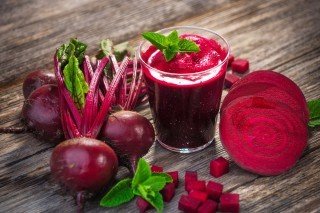The sports nutrition industry is growing at an unprecedented rate. This growth is a powerful signal that sports nutrition is not a passing fad in the mainstream nutrition industry. Rather, it’s being fueled by relentless demand among a growing pool of non-athlete consumers.
Sports Nutrition And Wellness Ideals
Ingredient innovations and product launches in the healthy snacking space have pushed sports nutrition into an enviable position—the intersection of exercise and performance goals on the one hand and lifestyle and wellness ideals on the other.
The expansion into newer consumer demographics, market positioning and a broader focus on health has in some respects placed sports nutrition products in direct competition with the wider nutritional product industry. This includes packaged health and wellness foods, dietary supplements and weight management products that were previously at the center of consumers’ health and nutritional goals.
Overall, sports nutrition is no longer a narrow niche far removed from the life of the average person. It’s entered the mainstream and there’s no sign it will turn back soon. Here’s a closer look at the trends that are and will continue defining sports nutrition growth now and in the short to medium term.
1. Fit Consumers
There’s a fast-growing demographic of active consumers who strive to incorporate fitness activities into their daily routines. It’s this demographic that’s primarily responsible for pushing the sports nutrition industry from the fringes into the mainstream. Hundreds of millions of people mainly in developed markets of North America and Western Europe but increasingly in the emerging markets of Asia and South America participate in either walking, equipment exercise, jogging or aerobics.

Whereas for older persons’, an exercise plan is meant to ensure the maintenance of mental sharpness and the ability to perform normal activity, issues around maximizing everyday physical performance are fundamental for youthful and middle-aged adults. Top fitness concerns include back/neck pain, stress, muscle tone and low energy levels. The focus of diets is turning to ensuring sustained energy all day.
Little wonder that millions of adults now take sports beverages, energy drinks and energy shots on a regular basis.
2. Management of Health Conditions
At the top of fitness-conscious consumers’ health priority list is cognition/alertness, gut health, anti-aging, immunity, mood, joint health and heart health. A significant proportion of shoppers are thus looking at sports nutrition products with the goal of managing health conditions such as cancer, heart disease, high cholesterol, high blood pressure, diabetes, digestion problems, osteoporosis, sarcopenia, arthritis, stroke and failing eyesight.
They are picking foods that do not exacerbate the condition or inhibit their healing. Foods that are good for the heart, lower cholesterol levels, lower blood pressure, block fat and sugar absorption, and strengthen bones are going to continue growing. An endorsement by a major celebrity or an independent (or at least perceived as so) health organization is more highly regarded.
3. Clean Label and Natural Products
Sports nutrition products aren’t a monolith. Ergo, the market dynamics that characterize protein powders do not necessarily hold true for clean label products. Clean label is a steadily growing sports nutrition segment whose products pride themselves on using a small set of ingredients that have a solid reputation for delivering optimal nutritional value. Similarly, products labeled natural are appealing to a consumer market that is increasingly wary about ingesting man-made substances. It doesn’t help that artificial ingredients such as pesticides have been linked to various types of cancers.
Sports Nutrition Products Claims
Due to this positive reputation, clean label and natural sports nutrition products are often about a quarter pricier than the average product in the same category. Word of this success has spread fast. Roughly one in five sports nutrition products claim to be clean label or natural. Popular indicators of clean label and natural nutritional products include ‘no GMO’, ‘no artificial sweeteners’, ‘no banned substances’, ‘antibiotic-free’, ‘grass-fed’ and ‘no artificial ingredients’.
The clean label and natural trend is currently the most entrenched in the US, Canada and Australia, but it’s only a matter of time before consumers in other countries hop onto this bandwagon.
4. Animal Proteins Still Dominate, but Plant Proteins Are a Rising Alternative
Sports nutrition science has long shown that whey protein and other animal proteins more effectively deliver amino acids when compared to plant-based proteins, especially as concerned with muscle building and muscle recovery. Nevertheless, plant-based proteins like soy and pea are gaining popularity. This is the backdrop to more sportspeople seeking vegetarian and vegan options. The average young adult consumer is also experimenting with meat/dairy alternatives and plant-based meals.
In any case, the performance outcome differential between animal and plant protein is often marginal. In addition, it doesn’t have to be either-or. A number of sports nutrition product manufacturers are blending plant and animal proteins to present the best of both worlds. Such blends still comprise mostly animal protein with the percentage of plant protein usually in the mid-teens.
5. Pre-Workout Blends Breaking into Nootropics
Pre-workout blends are markedly different from other categories of sports nutrition. They have a more immediate effect because of the need to give athletes mental and physical stimulation before rigorous activities such as training sessions, gym workouts and competitive matches. Powders have usually been the dominant form factor in pre-workout blends. However, a number of companies are taking bold steps with ready-to-drink (RTD) versions. Three-quarters of pre-workout blends contain creatine, caffeine and branched-chain amino acids (BCAAs). The blends also have the widest range of ingredients of any category of sports nutrition.
It’s this immediacy and diversity that blurs the line between pre-workout blends and products in the nootropic and energy sectors.
6. New Horizons for BCAAs
BCAAs have been an integral component of muscle building sports supplements for nearly half a century. They have catered to an enthusiastic and devoted user base, which is a key reason BCAAs remain the most highly rated ingredient category in sports nutrition. BCAA-based products have underpinned the success of key sports nutrition brands. The highly informed user community understands which amino acids are best for efficacy.
Pre-workout and post-workout sports nutrition products that are seeing the most success are those that adhere to the research-based 1:1:2 ratio between valine, isoleucine and leucine. Emerging research around diabetes, anorexia and sarcopenia offers new opportunities for BCAAs beyond the sports nutrition arena.
7. Beet Juice
Beet juice isn’t a new phenomenon in sports nutrition, but the science underpinning its effectiveness in enhancing performance is growing. This vegetable is rich in nitrates. When you engage in rigorous exercise or other strenuous physical activity, food nitrates are converted into nitric oxide, a key player in the delivery of oxygen to the muscles.

An increase in oxygen delivery can increase the time it takes for the muscle to reach exhaustion. This therefore means increased endurance and an acceleration in running speed. One study demonstrated that when participants ingested 200 grams of roasted beets, they enjoyed a 3 percent improvement in their running speed on a 5 kilometer course.
8. Cannabidiol Oil
The movement to legalize cannabis is gaining traction worldwide. Perhaps it’s only fitting that cannabidiol oil (or CBD) is quickly becoming a darling of the sports nutrition universe. Unlike marijuana, CBD hasn’t had much difficulty scaling legal hurdles. It has an extremely low quantity of tetrahydrocannabinol (THC), the substance that causes the marijuana high.
CBD can strengthen the body’s endocannabinoid system which permeates virtually every part of the body. The endocannabinoid system can be inhibited by toxins, poor diet and stress. CBD contains phytocompounds and other nutrients that positively influence endocannabinoid system receptors. CBD can thus lower anxiety and improve sleep, but more importantly for sports nutrition buffs, it can reduce inflammation while soothing aches and pains.
9. Probiotics
Probiotics are taking root in the sports nutrition industry as science leverages the power of healthy bacteria to reduce inflammation, boost immunity, improve performance and accelerate recovery. Still, probiotic supplements remain a small niche in the sports nutrition field. However, nutrition products that contain probiotics are attracting more attention on average than those that do not.
10. Biomarker Testing
Biomarker testing services seek to establish a person’s genetic makeup in order to identify the best and healthiest decisions to make on nutrition, exercise and fitness. Following a blood test or saliva DNA capture, the individual will learn their biomarker levels and measure these over time to progress following changes to their diet and exercise routine.
Biomarker testing is based on the premise that the blood, saliva and DNA carries detailed data on the general state of a person’s health and wellness. Many biomarker testing services come with a mobile app where users can access, control and track their test results. Apps often integrate with other health and fitness apps allowing users to see their health and nutrition data on a single dashboard.
11. Sports Nutrition Villains Redeemed
After decades of being the punching bags of sports nutrition advocacy, certain foods are making a return to the good guys’ posse. Fat-rich foods such as butter are back in vogue, mainly thanks to popular diet plans such as keto and paleo. Whole milk and full-fat yogurt sales are rising fast. The turnover of fat-free, low fat and light fat cheese is in decline, with full-fat cheese accounting for the overwhelming majority of cheese sales.
It’s not just fat that’s firmly on the road to redemption. Many consumers now believe unprocessed meat is great for one’s health. Millennials associate poultry and meat with providing the vital nutrients the body needs such as iron and protein. American consumers are scaling up on seafood and fish in their meals. The most popular are shrimp, salmon, tilapia, canned tuna, Pangasius, Alaska Pollock, crab, cod, clams and catfish.
12. Unique Processing
Thanks to unprecedented consumer awareness largely driven by the democratization of knowledge through the Internet, shoppers are making well-thought-out decisions in selecting sports nutrition foods based on the type, extent and effect of processing used.
Minimally processed foods are perceived as healthier in keeping with the move toward natural and clean label products. Another important food processing trend is the drive towards processing methods that enhance a food’s overall nutritional benefits. An example is products that utilize a unique filtration technique to deliver more protein and minerals in protein shakes while reducing the amount of sugar.
Other processing methods that gather steam include cold-pressed oils, juices and beverages. Also, hydroponic production, longer fermentation, sprouted grain and food traceability.
13. The Power of Ratings and Reviews
Like everything else, sports nutrition products are increasingly advertised, promoted and bought over the Internet. Such e-commerce goes hand in hand with online ratings and reviews. Sports nutrition product reviews now number in the millions. While the bulk of the reviews are by consumers in North America, Western Europe and Australia, Asian markets are leading the review growth charge.

Pre-workout blends and protein powders are seeing especially robust growth in reviews. There’s often a virtuous or vicious cyclical relationship between reviews and high or low ratings. If there’s a surge in low or high ratings, you can expect exploding numbers of negative or positive reviews respectively. That’s because humans are inherently drawn toward strong opinions. Very low or very high ratings will see throngs of customers rushing to share their own experiences.
Reviews and ratings are key in shaping a product’s market reputation and thus sales. Reviews and ratings are also used by major e-tailers to determine which products remain in their catalogues and which ones have to be dropped. Such e-tailer decisions can determine the success or failure of a sports nutrition brand.
Bottom Line
In summary, the reasons the average consumer is turning to sports nutrition products and solutions are varied. These include weight loss goals, battling age-related conditions, and vegetarians and vegans seeking supplements to complete their nutrient intake. There’s also a decisive switch by consumers toward lifestyle, nutrition and health goals, without a specific interest in athlete-level performance. The depth and diversity of sports nutrition products and solutions are evolving to accommodate these shifting market demands.
Nutrition advocates are less drawn to traditional whey-based protein. Instead they are turning to fitness-centric products such as plant protein powders and on-the-go solutions such as sports protein drinks and protein bars.
Of course, there’s no crystal ball that can conclusively say which sports nutrition trends will stay for the long haul. In the end, sports nutrition products that have a finger on the pulse of the market are most likely to succeed over the long-term.



![women [longevity live]](https://longevitylive.com/wp-content/uploads/2020/01/photo-of-women-walking-down-the-street-1116984-100x100.jpg)










